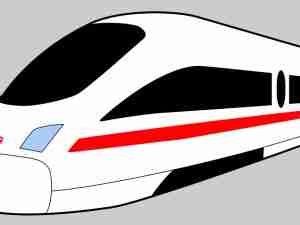James Meil, Chief Economist, Eaton Corporation; William Strauss, Senior Economist for the Federal Reserve Bank of Chicago and Bill Witte, Co-Director of the Center for Econometric Model Research opened the conference by participating in an Economic Panel discussion. The majority opinion concluded that the near term economic environment is uncertain with downside risks having risen significantly in the weeks just prior to the conference. The freight environment depends primarily on developments in the industrial sector; and, while the outlook for industrial production and manufacturing is more robust than prior outlooks, the housing situation is likely to hurt the transportation industry well into 2008.
James Miller, Strategic Planning for Con-Way, Inc.; Paul Will, CFO of the Celedon Group Inc.; and Michael Holloran, Equity Research Associate Transportation and Logistics for Robert W Baird & Co., Inc. presented material covering many of the elements currently affecting the trucking sector: Hours of Service (HOS) rules and other government regulations, the driver shortage, highway congestion as well as the factors leading to the current sluggish freight environment. Truck ton miles are forecast by FTR to decline 2.2% in 2007 and rise only a miniscule 0.7% in 2008. Specific issues unique to the LTL sector, such as further consolidation, significant changes in services being offered, and union contracts affecting some of these carriers were also highlighted.
Rail industry outlook presenters included John Larkin, Managing Director ' Stifel, Nicolaus & Company, Inc., Dick Kloster, VP ' North American Transport Solutions; and Michael MacMahon, Marketing Director ' Freight Car America, Inc. Railroad ton miles are forecast to decline 2.3% in 2007 but rise 1.8% in 2008 with current rail freight and rail car demand being hurt by the general weakness in the overall economy. The future for railcar production is expected to settle in the 50,000-70,000 cars per year range due to aging and cubic obsolescence of some rail cars in service today.
Larry Gross, President ' Gross Transportation Consulting and Patrick Casey, VP of Fleet Management for TTX Company included the following observations during their Intermodal Outlook presentations: The current reduction in imported household goods has had a negative impact on this sector resulting in 50-train sets sitting in storage not being utilized. Other factors mentioned affecting slowing intermodal growth were the ongoing inventory correction in the U.S., the increased use of all-water services from Asia to the east and Gulf coast ports, and the stiffening of truck competition in short haul markets. On the positive side, with imports picking up as the U.S. economy rebounds, intermodal loadings are forecast to rise 3.6% in 2008.
Water and air freight presentations were given by guest speakers Ken Eriksen, Senior V.P Transportation and Logistics for Informa Economics; and Rakesh Puri, Manager Strategic Market Analysis ' Fed Ex. Material presented pointed to a tripling of global air freight volume in the next 20 years because of the internationalization of the world's economy. Risks to this forecasted volume growth relate to increased security requirements, a rebirth of protectionism, escalating fuel prices, inadequate public infrastructure, more onerous customer requirements, increasingly imbalanced freight flows as well as a possible shortfall in the growth of air freight capacity to meet this volume increase during this time frame. Water ton miles are currently being impacted by fluctuating barge rates and are expected to decl






